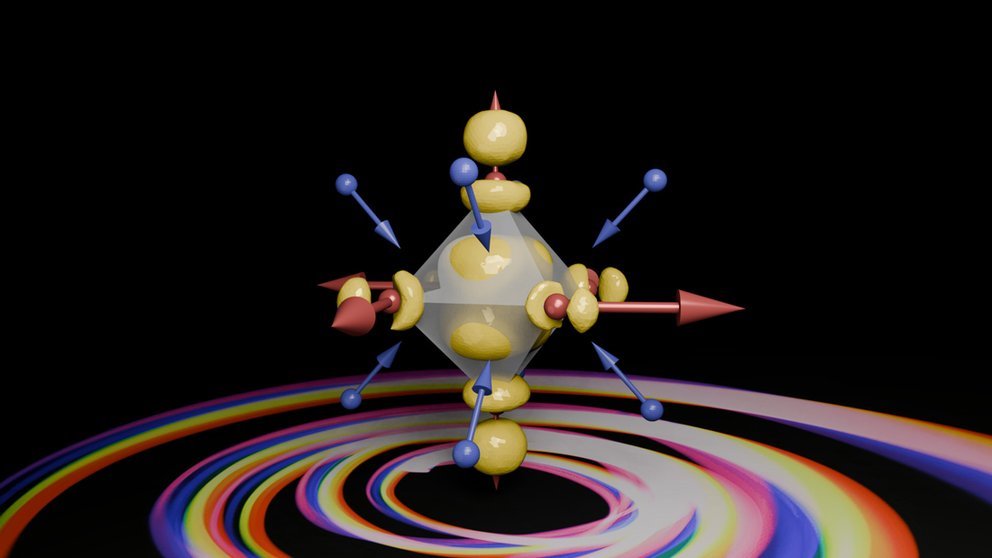
A large hole polaron in the halide double perovskite. The arrows are indicative of atomic displacements with the hole at the center. (Image Credit: J. Lafuente-Bartolome.)
Researchers at the Texas Advanced Computing Center are gaining more insight into how metal-halide perovskites serve as a better material than silicone for turning solar light into energy. They ran simulations on their Frontera and Lonestar 6 supercomputers, discovering "vortex structures in quasiparticles of electrons and atoms, called polarons." This breakthrough could pave the way toward developing new solar cells and LEDs that could "reshape the future of illumination."
"These polarons show very intriguing patterns. The atoms rotate around the electron and form vortices that had never been observed before," said Giustino. Polarons' vortex structures could keep the electrons in an excited state, which occurs when a photon of light knocks into compounds at the atomic level.
"We suspect that this strange vortex structure prevents the electron from going back to the unexcited energy level," Giustino said. "This vortex is a protected topological structure in the halide perovskite lattice material that remains in place for a long time and allows the electrons to flow without losing energy."
"It turns out that halide perovskites in solar cells show exceptional energy conversion efficiency," Giustino said. Halide perovskites in solar cells have better energy conversion efficiency than silicone. Silicone's top energy efficiency is approximately 25%, which took 70 years of development to achieve. Halide perovskites only took ten years to reach 25% efficiency.

A small ferrotoroidic electron polaron in the halide double perovskite. Yellow represents the electron isosurface. Apical Br atoms in the BiBr6 octahedron spin around the vertical axis (red arrows). (Image Credit: J. Lafuente-Bartolome & F. Giustino.)
"This is a revolutionary material," Giustino said. "That explains why many research groups working on photovoltaics have moved to perovskites because they are very promising. Our contribution looked at the fundamentals using computational methods to delve into the properties of these compounds at the level of individual atoms."
The team used the Lonestar6 and Frontera supercomputers to discover polarons and how electrons and photons interact in perovskite. "This research is part of a project sponsored by the Department of Energy that has been going on for several years with the support of TACC and in particular Frontera, where we developed methodologies to study how electrons interact with the underlying atomic lattice," Giustino said.
He also said the large polarons required simulation cells of approximately half a million atoms, which is impossible to observe using traditional methods. To handle those calculations, Giustino and his collaborators built EPW, "an open-source Fortran and message passing interface code that calculates properties related to electron-photon interaction." The EPW code investigates the process of electrons interacting with vibrations in the lattice of a solid, causing the formation of polarons.
Their work could also be used to develop ferroelectric memory devices in which data is encoded due to atoms vibrating in a crystal after applying electricity.
Have a story tip? Message me at: http://twitter.com/Cabe_Atwell
